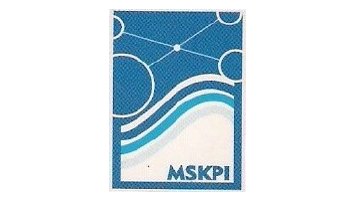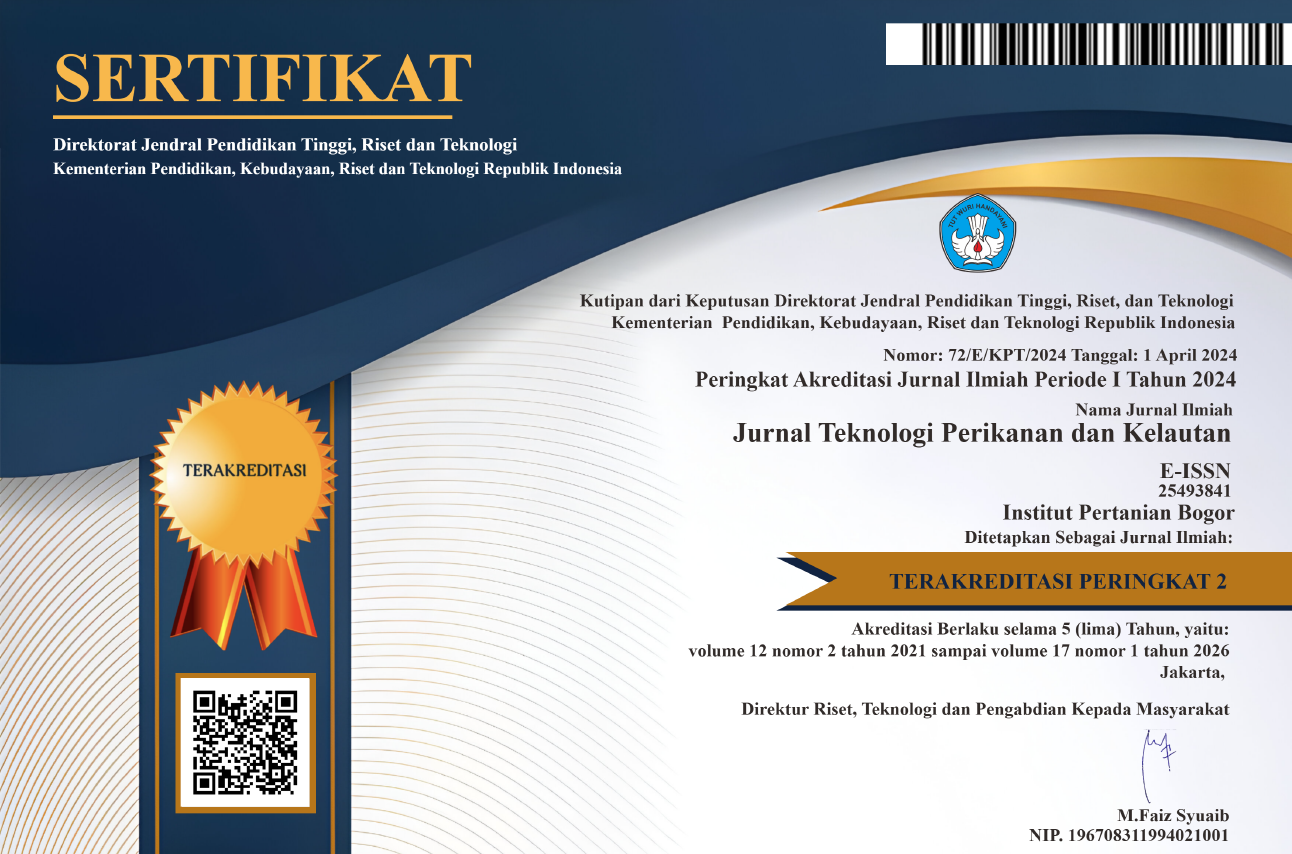EKSTRAKSI KITOSAN DARI CANGKANG RAJUNGAN PADA LAMA DAN PENGULANGAN PERENDAMAN YANG BERBEDA
DOI:
https://doi.org/10.24319/jtpk.10.49-59Keywords:
chitin, chitosan, deacetylation degreeAbstract
Research on making chitosan from small crab shells has been done by several researchers before. This study aims to determine the time priority and repetition of immersion in NaOH solution to increase the value of the degree of deacetylation of chitosan. Previously, chitin extracted from crab shells through two cups, namely deproteination and demineralization. The process of deacetylation of chitin was done by varying the immersion time in the NaOH solution (2, 3, and 4) hours also repeated soaking 3, 4, and 5 times. The deacetylation process used 50% (w/v) NaOH solution involving chitin against 1:20 (w/v) NaOH solution at 120°C. The chitosan obtained was analyzed a functional group using FTIR and analyzed the degree of deacetylation (DD) using the titration method. Chitin obtained as much as 12,4% from small crab shell flour. The greatest (best) deacetylation degree of chitosan was obtained during the 4 hours deacetylation process and the number of deacetylation repetitions 5 times with DD of 44,26% and the yield of chitosan 83%. The length of soaking time in NaOH solution was the most determining factor for the value of the deacetylation degree of chitosan produced.
Downloads
Downloads
Published
Issue
Section
License
This journal is published under the terms of the Creative Commons Attribution-NonCommercial 4.0 International License. Authors who publish with this journal agree to the following terms: Authors retain copyright and grant the journal right of first publication with the work simultaneously licensed under a Creative Commons Attribution-NonCommercial 4.0 International License. Attribution — You must give appropriate credit, provide a link to the license, and indicate if changes were made. You may do so in any reasonable manner, but not in any way that suggests the licensor endorses you or your use. NonCommercial — You may not use the material for commercial purposes.






















